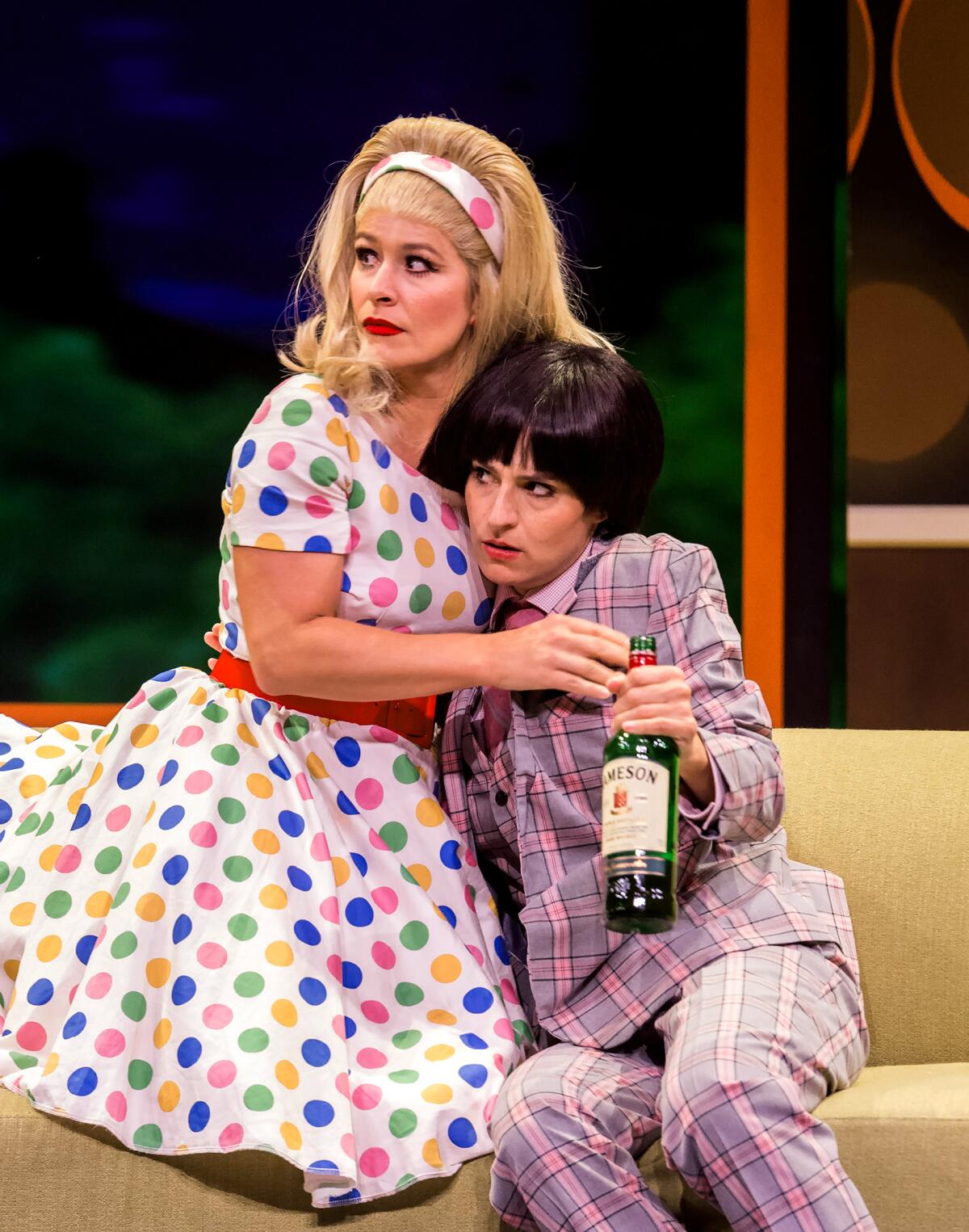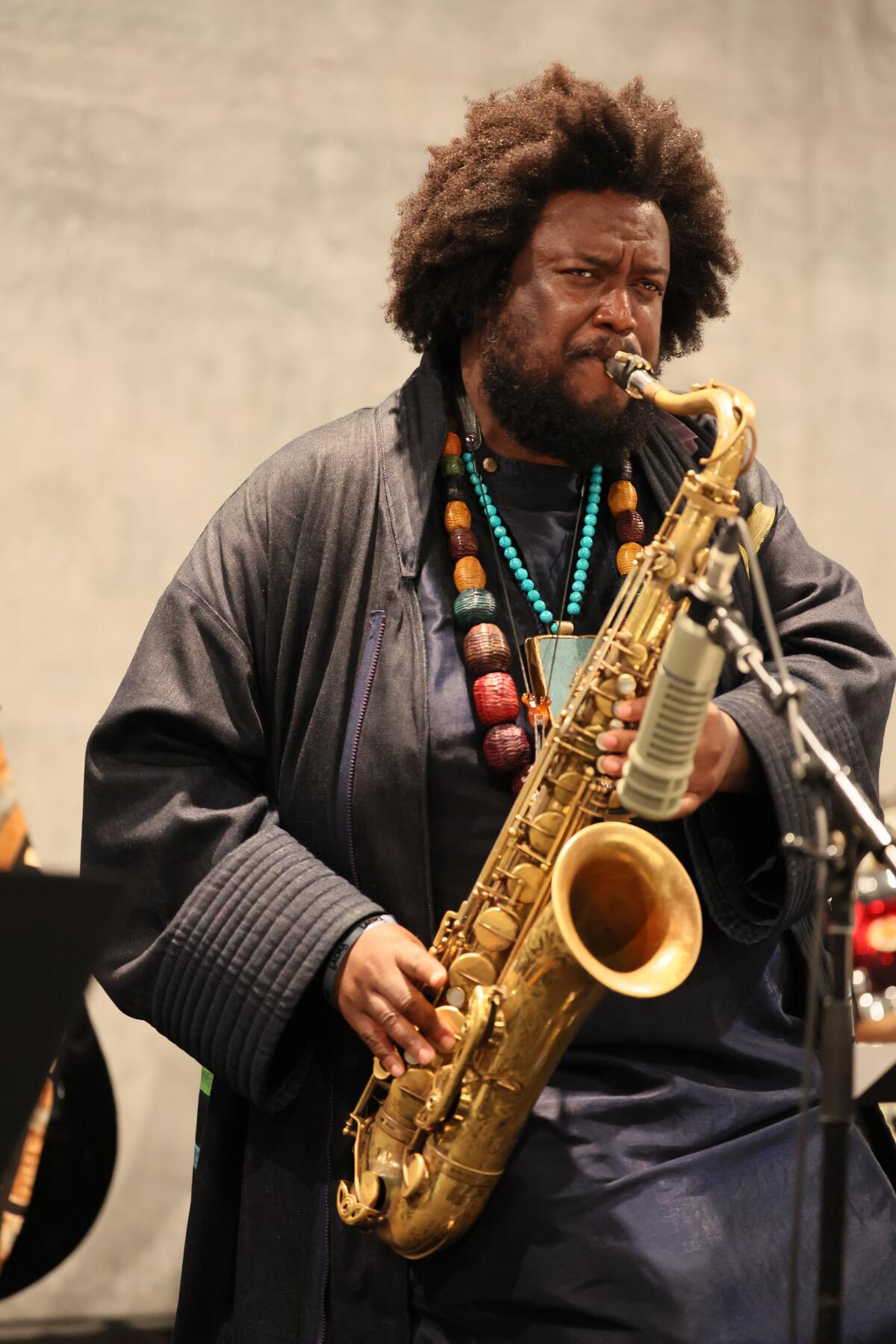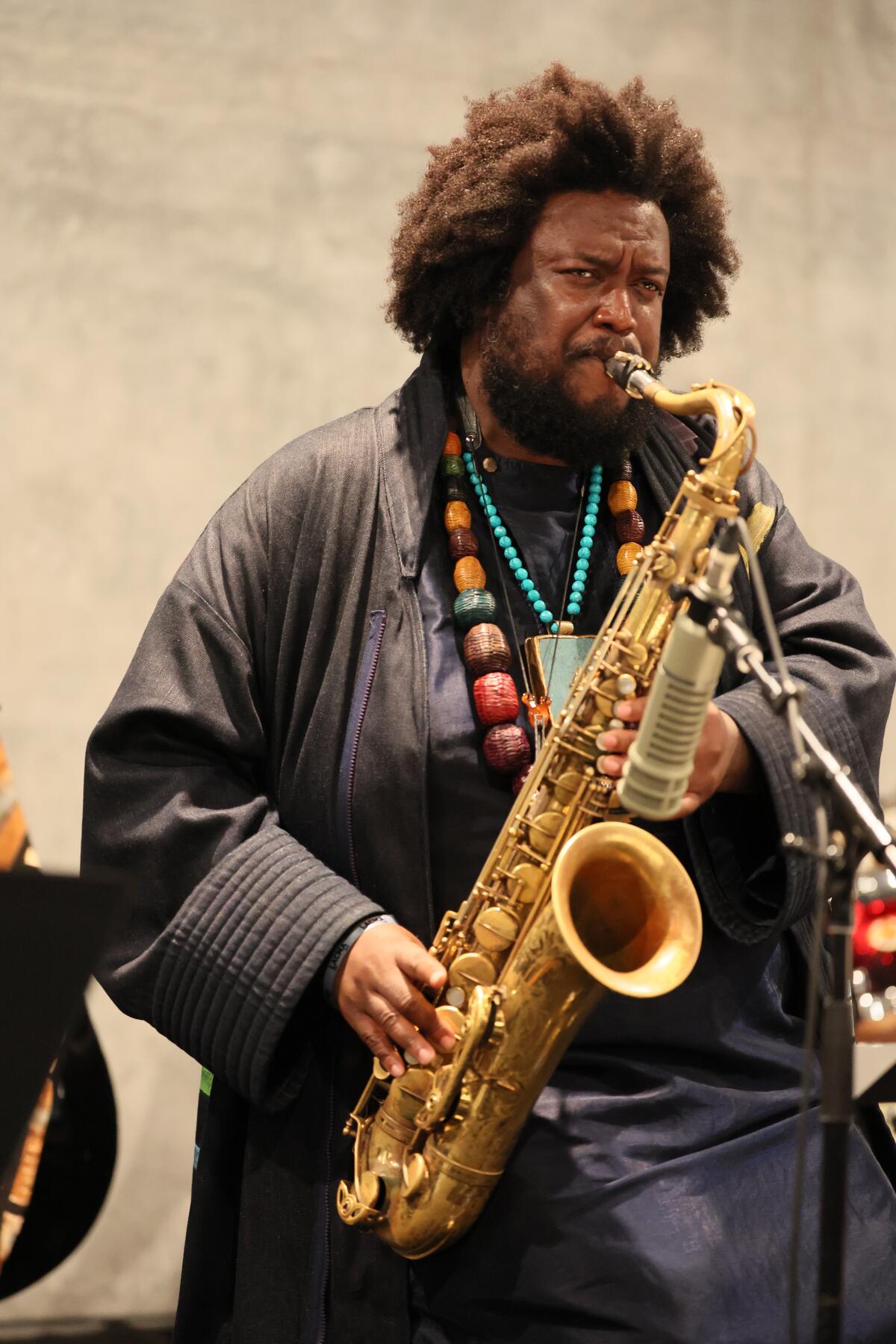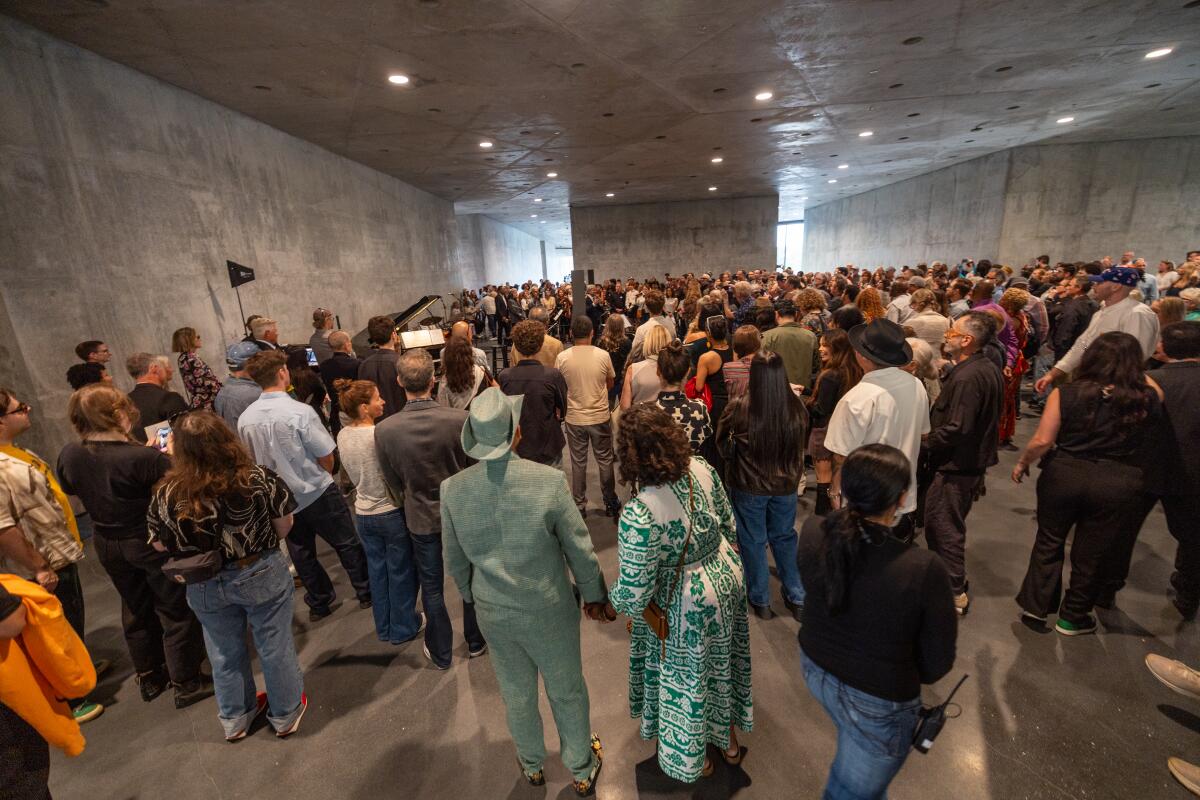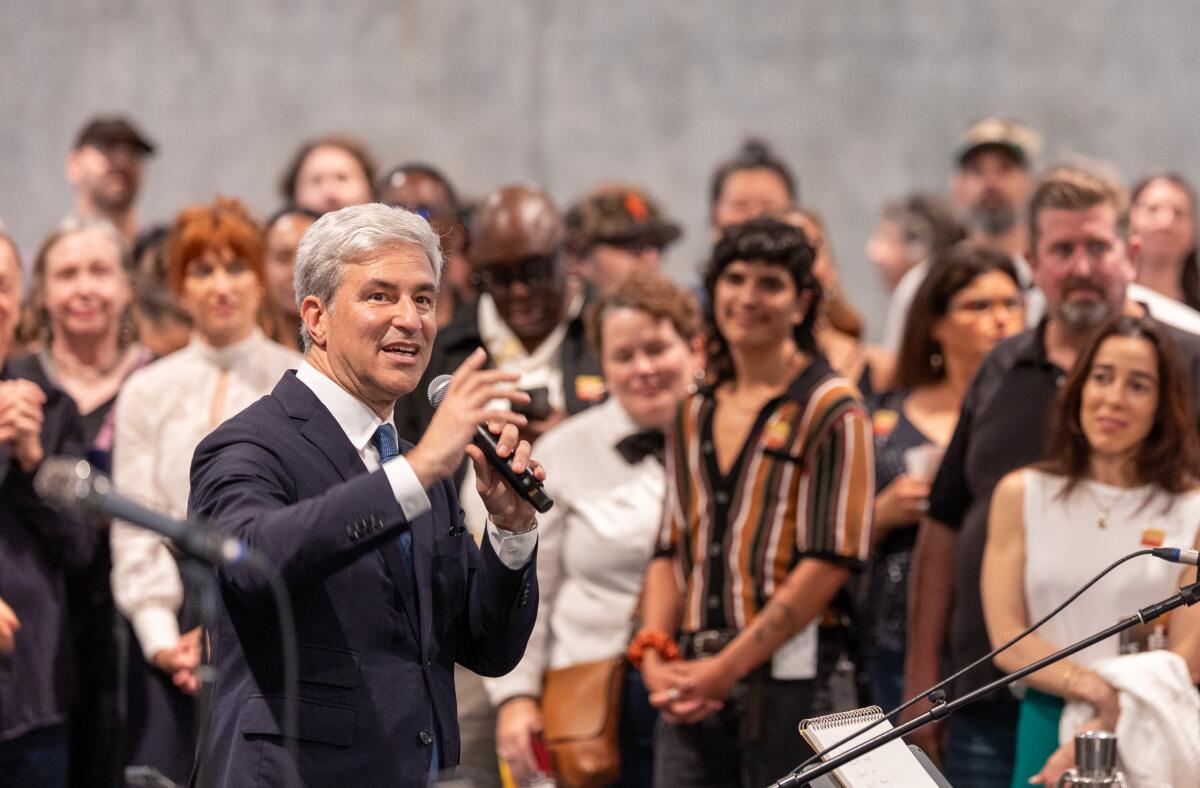‘One Man, Two Guvnors’ makes zany ensemble magic at A Noise Within
The festivities begin even before the characters of “One Man, Two Guvnors” enter the stage. A skiffle band (complete with washboard player) performs a pre-show set to rev up the audience for this update of a classic farce relocated to Britain on the eve of the swinging ‘60s.
The inspiration for Richard Bean’s “One Man, Two Guvnors,” now at A Noise Within in Pasadena, is “The Servant of Two Masters,” Carlo Goldoni’s mid-18th-century comedy that formalized the commedia dell’arte antics and masked characters made famous by the improvisational Italian troupes of the day. Bean’s play, set in the eccentric seaside town of Brighton, is quintessentially English by contrast. But farce is a universal language, and the hilarity is not just translated but alchemized into something riotously contemporary.
Grant Olding has written the songs that set the play’s mood, a mischievous Joe Orton-esque ambiance, only less jaundiced and more childlike. Francis Henshall (Kasey Mahaffy), a down-on-his luck busker who moves through the world like an overgrown baby, is driven more by hunger than lust, at least in the play’s first half.
His raging appetite compels him to break the fourth wall and beg the audience for a spare sandwich. When James Corden played the role in London and then on Broadway (where he won a Tony Award for his work), Francis became a figure of unstoppable gluttony. Mahaffy, who starred in the exuberant revival of “A Man of No Importance” at A Noise Within last season, is more insistently peckish — hungry rather than hangry. Sustenance is offered — a hummus sandwich, not one of the character’s favorites — but the plot won’t allow him to dig in just yet. Poor Francis has no choice but to gamely proceed with the farcical business at hand.
“One Man, Two Guvnors” was so dominated by Corden’s star-making performance (this was before his late-night talk-show days) that I assumed the play was a vehicle for a no-holds-barred clown. The effectiveness of the new production, co-directed by Julia Rodriguez-Elliott and Geoff Elliott, is the ensemble approach to the comedy, with everyone expected to contribute their fair share of mirth.
Mahaffy may not be the most natural Zanni, the commedia term for the trickster servant who’s riddled with hunger and lust and always prepared to talk his way out of trouble. He works hard for his laughs, sometimes too hard, but he’s an endearing imp — an overwhelmed freelancer trying to survive the unforgiving gig economy of his age.
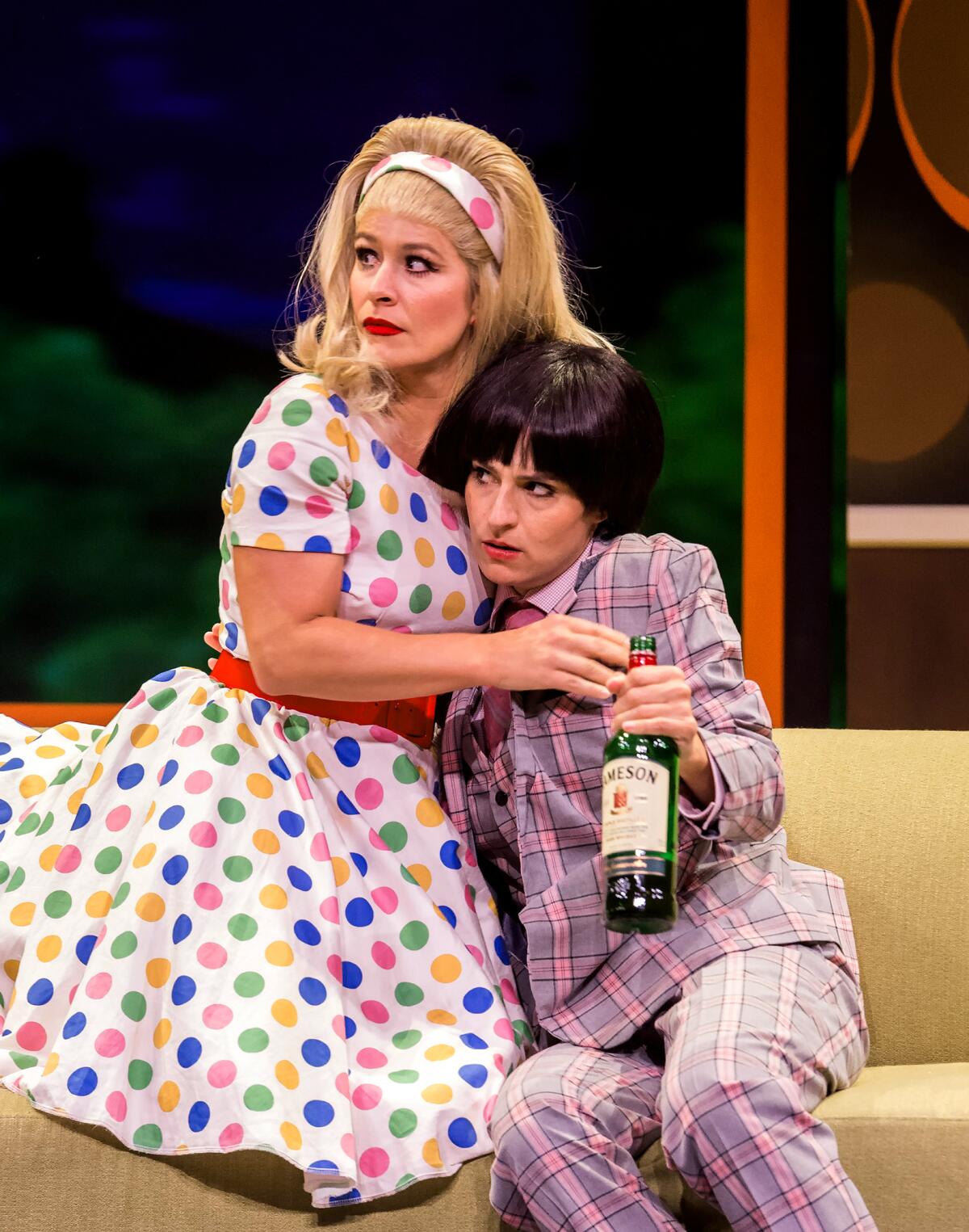
Cassandra Marie Murphy, left, and Christie Coran in “One Man, Two Guvnors” at A Noise Within.
(Craig Schwartz)
When the play begins, Francis is employed as the bodyguard of gangster Roscoe Crabbe, who has mysteriously returned from the dead. In fact, Francis is working for the gangster’s twin sister, Rachel Crabbe (Christie Coran), who has disguised herself as Roscoe to extract a debt from Charlie “The Duck” Clench (Henri Lubatti).
Charlie’s dim-bulb daughter, Pauline (Cassandra Marie Murphy), was betrothed to Roscoe, a known homosexual with a sadistic temper. It was to be a marriage of convenience — convenient business-wise for both Roscoe and Charlie. But after Roscoe’s reported death freed her from a frightening prospect, Pauline has become engaged to Alan Dangle (Paul David Story), a would-be actor whose every utterance of love is as hammy as it is sickly sweet.
Rachel is trying to obtain enough money to get married herself. Her intended, Stanley Stubbers (Ty Aldridge), an upper-class twit, murdered her thuggish brother, who was against their union. If she can collect the dowry from Charlie, she and Stanley can sail to Australia to escape the police and live happily ever after Down Under.
Lacking the money to buy even a single portion of fish and chips at a local pub, Francis agrees to be Stanley’s right-hand man. Francis is determined to keep his two bosses apart, a recipe for farcical mayhem, made all the more complicated by Rachel’s convincing drag act and Stanley’s ignorance of her master plan.
In true commedia style, character is destiny. The plot is prescribed by the constellation of types. Obstacles are set up only to be overcome in a stroke of mad luck or outlandish kindness. The longer the delay, the greater the satisfaction when everything is gaily resolved.
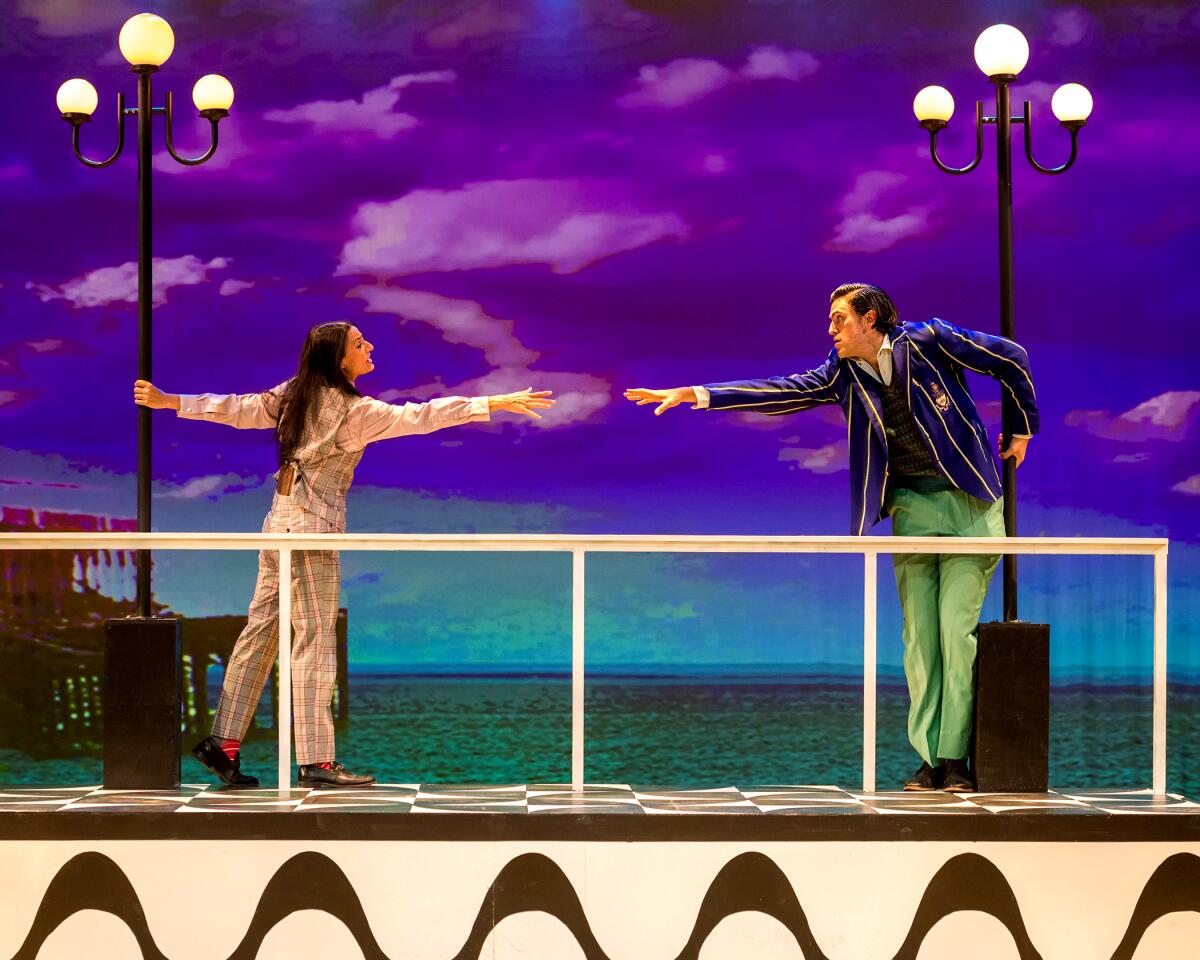
Christie Coran and Ty Aldridge in “One Man, Two Guvnors” at A Noise Within.
(Craig Schwartz)
But the route to the happy ending matters, and the actors make this journey a rollicking one. Aldridge’s Stanley is as obtuse as he is supercilious, a dangerous combination for Francis and a hilarious one for us. Coran’s Rachel plays a clever tough guy who puts on a vicious façade to avoid an actual fight. The performance — both in and within the play — works like a dream.
Murphy’s Pauline, a vacuous blonde too literal-minded for metaphor, and Story’s Alan, a scenery-chewer who hogs the spotlight, are a perfect match. Charlie, the transactional patriarch, is as proudly corrupt as his underhanded lawyer, Harry Dangle (Lynn Robert Beg), who sets an equally bad example for his kid, Alan.
Dolly (Trisha Miller), Charlie’s bookkeeper who capably sorts out whatever crooked business is put before her, becomes the romantic object of Francis’ exploits in the second act, when food becomes secondary to love — or its Majorca vacation equivalent, the holiday he dangles before her.
Toward the end of the first act, a serving scene involving a multicourse meal and an octogenarian waiter named Alfie (Josey Montana McCoy) with an adjustable pacemaker brings Francis’ mania for food to a feverish pitch. It’s an ingeniously choreographed slapstick routine, but the bit is even funnier after Francis conscripts a plant in the audience to assist him in hoarding food.
A production of “One Man, Two Guvnors” at South Coast Repertory in 2015 failed to summon the necessary vivacity. That’s where Rodriguez-Elliot and Elliot succeed, creating a party atmosphere through not just the hard-charging band (under the music direction of Rod Bagheri) but the mod scenic design of Frederica Nascimento and the jaunty vintage flair of Garry Lennon’s costumes.
Bean’s play is impressively worked out, mathematically and verbally. The wit is crisp and the comic routines are evergreen, all the more so for the sharpness of the playing.
Mahaffy’s Francis is unfailingly vivid as the self-serving valet of commedia tradition. But this production proves that “One Man, Two Guvnors” is more than a star vehicle for an insanely hungry clown.
‘One Man, Two Guvnors’
Where: A Noise Within, 3352 E Foothill Blvd. Pasadena
When: 7:30 p.m. Thursdays-Fridays, 2 and 7:30 p.m. Saturdays, 2 p.m. Sundays. Ends Sept. 28
Tickets: Starts at $51.50
Contact: (626) 356-3100 or www.anoisewithin.org
Running time: 2 hours, 20 minutes
